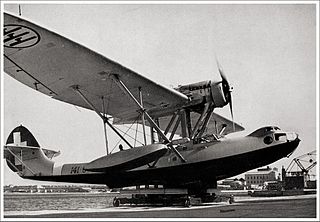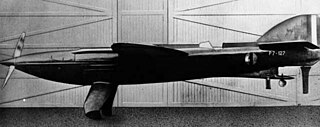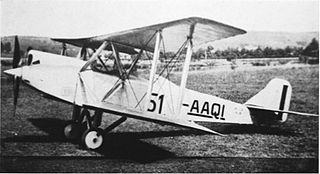
The CANT Z.501 Gabbiano was a high-wing central-hull flying boat, with two outboard floats. It was powered by a single engine installed in the middle of the main-plane and had a crew of 4–5 men. It served with the Italian Regia Aeronautica during World War II, as a reconnaissance aeroplane. During its debut in 1934, it set a world distance record. It was obsolete by 1940, but was still used throughout World War II, suffering many losses. A few remained in service until 1949.

The CANT Z.506 Airone was a triple-engine floatplane produced by CANT from 1935. It served as a transport and postal aircraft with the Italian airline "Ala Littoria". It established 10 world records in 1936 and another 10 in 1937. During World War II it was used as a reconnaissance aircraft, bomber and air-sea rescue plane, by the Italian Regia Aeronautica and Regia Marina, Aeronautica Cobelligerante del Sud, Aeronautica Nazionale Repubblicana and the Luftwaffe. The military version revealed itself to be one of the best floatplanes ever built. Despite its wooden structure it was able to operate in very rough seas. A number of Z.506S air-sea rescue aircraft remained in service until 1959.

The CANT Z.511 was a four-engine long-range seaplane designed by Filippo Zappata of the "Cantieri Riuniti dell'Adriatico" (CRDA) company. Originally designed for the Central and South Atlantic passenger routes, it was later adapted as a military transport and special raider.

The Fiat CR.20 was an Italian biplane fighter used during the 1920s and 1930s. Designed by Celestino Rosatelli, it represented an intermediate step from the early biplane CR.1 and the later, successful series CR.30, CR.32 and CR.42.

The Breda A.4 was a biplane trainer produced in Italy in the mid-1920s. It was of conventional configuration with a two-bay unstaggered wing cellule and seating for the pilot and instructor in tandem open cockpits. Apart from civil use, the A.4 was also adopted by the Regia Aeronautica as a trainer. At least some examples were produced in floatplane configuration as the A.4idro.

The IMAM Ro.51 was an Italian fighter aircraft that first flew in 1937. It was designed for the 1936 new fighter contest for the Regia Aeronautica, with practically all the Italian aircraft builders involved.

The CANT Z.509 was a three-engine Italian floatplane developed from the Z.506A for use as a mailplane.
The Port Victoria P.V.1 was a British prototype floatplane fighter of the First World War, built at the Royal Naval Air Service's Port Victoria Marine Experimental Aircraft Depot on the Isle of Grain by fitting a Sopwith Baby with high-lift wings. Only a single aircraft was built, with the type not being chosen for production.

The Piaggio P.7, also known as the Piaggio-Pegna P.c.7, was an Italian racing seaplane designed and built by Piaggio for the 1929 Schneider Trophy race.

The Macchi M.53 was an Italian reconnaissance floatplane designed and built in the late 1920s by Macchi for the Regia Marina.

The CANT Z.515 was a twin engine monoplane floatplane designed and built for maritime reconnaissance in Italy at the start of World War II. It did not go into service.
The CANT 12 was a flying boat and training aircraft that was produced in Italy in the 1920s.

The CANT Z.516 was a three engine monoplane floatplane designed in Italy at the start of World War II. It did not go into service.
The CANT Z.504 was a prototype reconnaissance biplane flying boat made by CANT in the 1930s.
The Macchi M.C.77 was a reconnaissance bomber flying boat built by Macchi in the thirties and remained at the prototype stage.

The Macchi M.C.73 was a two-seat touring landplane / floatplane built by Macchi in the early 1930s.
The Caspar C 36 was an aircraft developed in Germany for aerial reconnaissance in the late 1920s.
The Kawanishi E13K, company designation AM-19, was a Japanese 1930s three-seat reconnaissance floatplane.
The Caspar U 2 was a recce floatplane built for Japan in the 1920s.
The IMAM Ro.26, sometimes called the Romeo Ro.26, was a single-engine biplane trainer aircraft produced by the Italian aeronautical company IMAM in the early 1930s. Only one example was built.












